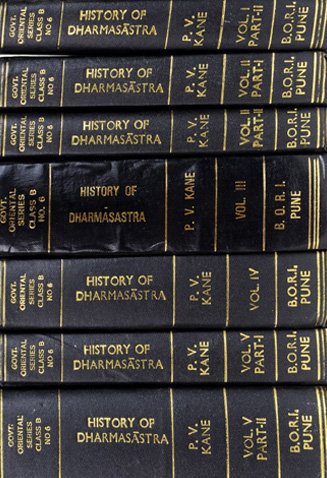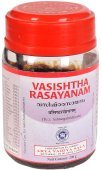Vikankata, Vikaṅkata, Vikaṅkaṭa, Vikaṅkatā, Vikamkata: 13 definitions
Introduction:
Vikankata means something in Hinduism, Sanskrit, biology. If you want to know the exact meaning, history, etymology or English translation of this term then check out the descriptions on this page. Add your comment or reference to a book if you want to contribute to this summary article.
In Hinduism
Dharmashastra (religious law)
Source: Wisdom Library: Dharma-śāstraVikaṅkata (विकङ्कत) is a Sanskrit word, identified with Flacourtia sapida (Indian plum) by various scholars in their translation of the Śukranīti. This tree is mentioned as having thorns, and should therefore be considered as wild. The King shoud place such trees in forests (not in or near villages). He should nourish them by stoole of goats, sheep and cows, water as well as meat. Note that Flacourtia sapida is a synonym of Flacourtia indica.
The following is an ancient Indian horticultural recipe for the nourishment of such trees:
According to Śukranīti 4.4.110-112: “The powder of the dungs of goats and sheep, the powder of Yava (barley), Tila (seeds), beef as well as water should be kept together (undisturbed) for seven nights. The application of this water leads very much to the growth in flowers and fruits of all trees (such as vikaṅkata).”

Dharmashastra (धर्मशास्त्र, dharmaśāstra) contains the instructions (shastra) regarding religious conduct of livelihood (dharma), ceremonies, jurisprudence (study of law) and more. It is categorized as smriti, an important and authoritative selection of books dealing with the Hindu lifestyle.
Ayurveda (science of life)
Nighantu (Synonyms and Characteristics of Drugs and technical terms)
Source: Wisdom Library: Raj NighantuVikaṅkata (विकङ्कत) is the name of a tree (Kaṇṭāī) that is associated with the Nakṣatra (celestial star) named Viśākhā, according to the second chapter (dharaṇyādi-varga) of the 13th-century Raj Nighantu or Rājanighaṇṭu (an Ayurvedic encyclopedia). Accordingly, “these [trees] are propounded in Śāstras, the secret scriptures (śāstrāgama). These pious trees [viz, Vikaṅkata], if grown and protected, promote long life”. These twenty-seven trees related to the twenty-seven Nakṣatras are supposed to be Deva-vṛkṣas or Nakṣatra-vṛkṣas.
Source: WorldCat: Rāj nighaṇṭuVikaṅkatā (विकङ्कता) is another name for Atibalā, a medicinal plant identified with Abutilon indicum Linn. (“Indian mallow”) from the Malvaceae or mallows family of flowering plants, according to verse 4.101-102 of the 13th-century Raj Nighantu or Rājanighaṇṭu. The fourth chapter (śatāhvādi-varga) of this book enumerates eighty varieties of small plants (pṛthu-kṣupa). Together with the names Vikaṅkatā and Atibalā, there are a total of ten Sanskrit synonyms identified for this plant.

Āyurveda (आयुर्वेद, ayurveda) is a branch of Indian science dealing with medicine, herbalism, taxology, anatomy, surgery, alchemy and related topics. Traditional practice of Āyurveda in ancient India dates back to at least the first millenium BC. Literature is commonly written in Sanskrit using various poetic metres.
General definition (in Hinduism)
Source: archive.org: Vedic index of Names and SubjectsVikaṅkata (विकङ्कत) is the name of a tree (Flacourtia sapida), often mentioned in the later Saṃhitās and the Brāhmaṇas.
Biology (plants and animals)
Source: Google Books: CRC World Dictionary (Regional names)Vikankata in India is the name of a plant defined with Abutilon guineense in various botanical sources. This page contains potential references in Ayurveda, modern medicine, and other folk traditions or local practices It has the synonym Abutilon indicum var. guineense (Schumach. (among others).
Example references for further research on medicinal uses or toxicity (see latin names for full list):
· Hortus Britannicus (1826)
· Blumea (1966)
· Det Kongelige Danske Videnskabernes Selskabs Naturvidenskabelige og Mathematiske Afhandlinger (1829)
· Species Plantarum (1753)
· Acta Botanica Yunnanica (1982)
· Journal of Botany, British and Foreign (1936)
If you are looking for specific details regarding Vikankata, for example pregnancy safety, diet and recipes, extract dosage, side effects, health benefits, chemical composition, have a look at these references.

This sections includes definitions from the five kingdoms of living things: Animals, Plants, Fungi, Protists and Monera. It will include both the official binomial nomenclature (scientific names usually in Latin) as well as regional spellings and variants.
Languages of India and abroad
Sanskrit dictionary
Source: DDSA: The practical Sanskrit-English dictionaryVikaṅkaṭa (विकङ्कट) or Vikaṅkata (विकङ्कत).—A kind of tree (of the wood of which ladles were made, Mar. vehekaḷa); संभ्रमोऽभवदपोढकर्मणा- मृत्विजां च्युतविकङ्कतस्रुचाम् (saṃbhramo'bhavadapoḍhakarmaṇā- mṛtvijāṃ cyutavikaṅkatasrucām) R.11.25.
Derivable forms: vikaṅkaṭaḥ (विकङ्कटः), vikaṅkataḥ (विकङ्कतः).
Source: Cologne Digital Sanskrit Dictionaries: Shabda-Sagara Sanskrit-English DictionaryVikaṅkaṭa (विकङ्कट).—m.
(-ṭaḥ) A plant, (Ruellia longifolia, &c.:) see gokṣura. E. vi apart, kaki to go, aff. aṭan .
--- OR ---
Vikaṅkata (विकङ्कत).—m.
(-taḥ) A small tree. E. vi apart, kaki to go or grow, atac aff.; or vi a bird, kaki, &c. as before; on which the birds roost.
Source: Cologne Digital Sanskrit Dictionaries: Benfey Sanskrit-English DictionaryVikaṅkata (विकङ्कत).—m. A small tree, [Raghuvaṃśa, (ed. Stenzler.)] 11, 25.
Source: Cologne Digital Sanskrit Dictionaries: Cappeller Sanskrit-English DictionaryVikaṅkata (विकङ्कत).—[masculine] [Name] of a plant.
Source: Cologne Digital Sanskrit Dictionaries: Monier-Williams Sanskrit-English Dictionary1) Vikaṅkaṭa (विकङ्कट):—[=vi-kaṅkaṭa] [from vi] m. Asteracantha Longifolia, [cf. Lexicographers, esp. such as amarasiṃha, halāyudha, hemacandra, etc.]
2) Vikaṅkata (विकङ्कत):—[=vi-kaṅkata] [from vi] m. (vi-) Flacourtia Sapida (from which sacrificial vessels are made), [Taittirīya-saṃhitā] etc. etc.
3) Vikaṅkatā (विकङ्कता):—[=vi-kaṅkatā] [from vi-kaṅkata > vi] f. Sida Cordifolia and Rhombifolia, [cf. Lexicographers, esp. such as amarasiṃha, halāyudha, hemacandra, etc.]
Source: Cologne Digital Sanskrit Dictionaries: Yates Sanskrit-English Dictionary1) Vikaṅkaṭa (विकङ्कट):—[vi-kaṅkaṭa] (ṭaḥ) 1. m. Ruellia longifolia.
2) Vikaṅkata (विकङ्कत):—[vi-kaṅkata] (taḥ) 1. m. A small tree.
[Sanskrit to German]
Sanskrit, also spelled संस्कृतम् (saṃskṛtam), is an ancient language of India commonly seen as the grandmother of the Indo-European language family (even English!). Closely allied with Prakrit and Pali, Sanskrit is more exhaustive in both grammar and terms and has the most extensive collection of literature in the world, greatly surpassing its sister-languages Greek and Latin.
Kannada-English dictionary
Source: Alar: Kannada-English corpusVikaṃkata (ವಿಕಂಕತ):—[noun] the tree Flacourtia sapida of Flacourtiaceae family.
Kannada is a Dravidian language (as opposed to the Indo-European language family) mainly spoken in the southwestern region of India.
See also (Relevant definitions)
Starts with: Vikankatah, Vikankatam, Vikankataparvata.
Full-text (+6): Vaikankata, Vikankatika, Pindara, Yajniyabrahmapadapa, Mriduphala, Vikankatimukha, Kantakara, Himaka, Vikankatam, Vritimkara, Kinkirin, Kantapatra, Bhujambu, Kinkini, Stanitaphala, Shruvavriksha, Gopaghanta, Sruc, Gopaghonta, Carudhi.
Relevant text
Search found 17 books and stories containing Vikankata, Vikaṅkata, Vikaṅkaṭa, Vikaṅkatā, Vikamkata, Vi-kankata, Vi-kaṅkaṭa, Vi-kaṅkata, Vi-kaṅkatā, Vikaṃkata; (plurals include: Vikankatas, Vikaṅkatas, Vikaṅkaṭas, Vikaṅkatās, Vikamkatas, kankatas, kaṅkaṭas, kaṅkatas, kaṅkatās, Vikaṃkatas). You can also click to the full overview containing English textual excerpts. Below are direct links for the most relevant articles:
The Agnistoma Somayaga in the Shukla Yajurveda (by Madan Haloi)
Part 2.5: The Pravargya rite < [Chapter 4 - The Agniṣṭoma Ritual]
Part 5.2: Morning Soma pressing (prātaḥsavana) < [Chapter 4 - The Agniṣṭoma Ritual]
Brihat Samhita (by N. Chidambaram Iyer)
Chaitanya Bhagavata (by Bhumipati Dāsa)
Verse 1.2.164 < [Chapter 2 - The Lord’s Appearance]
Bharadvaja-srauta-sutra (by C. G. Kashikar)
Atharvaveda and Charaka Samhita (by Laxmi Maji)
Classification of Drugs in the Caraka-Saṃhitā < [Chapter 4 - Diseases and Remedial measures (described in Caraka-saṃhitā)]
Vanaspati (Plants) used in Veda < [Chapter 2 - The nature of treatment for diseases in the Ancient era]
Rasa Jala Nidhi, vol 5: Treatment of various afflictions (by Bhudeb Mookerjee)
Related products
